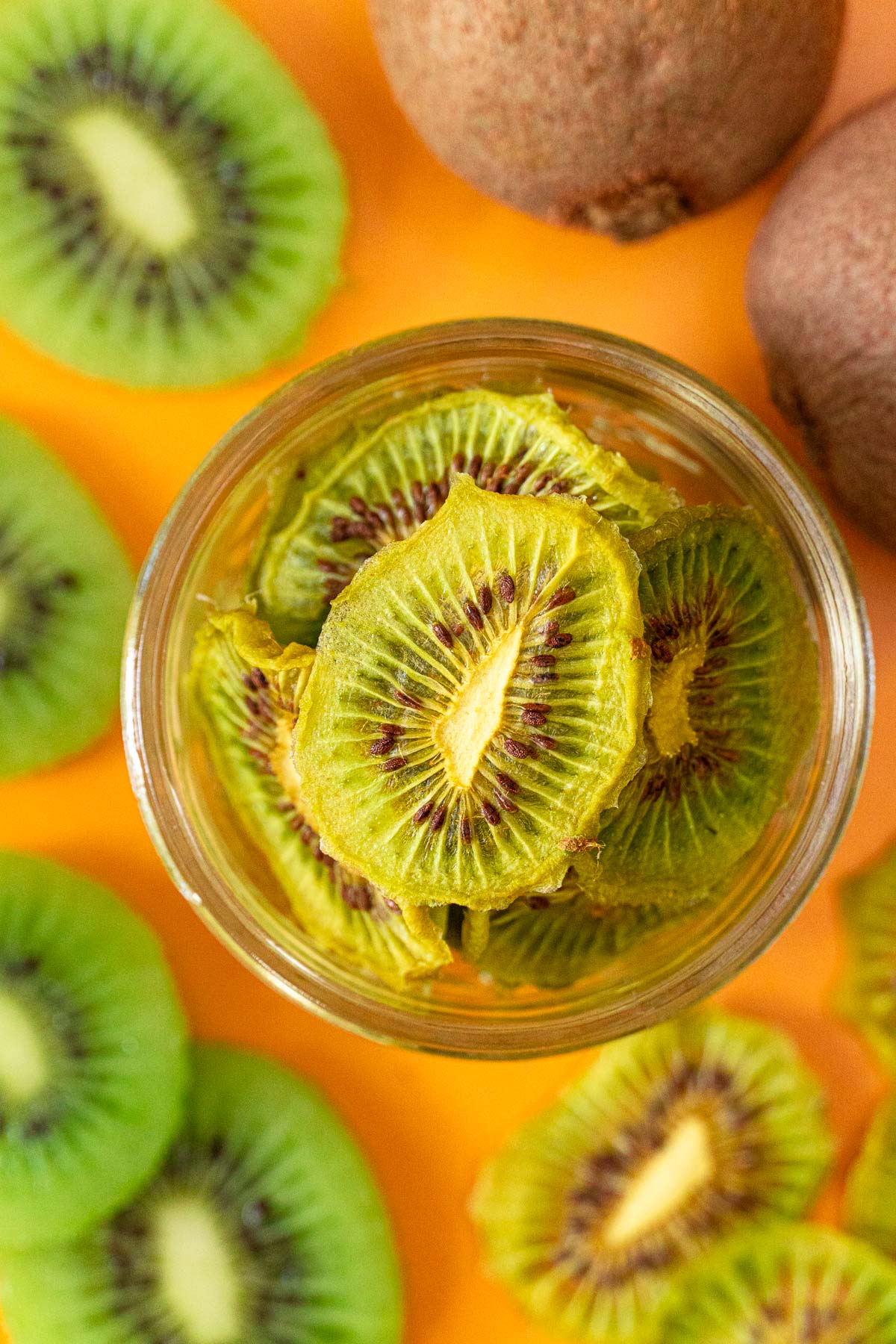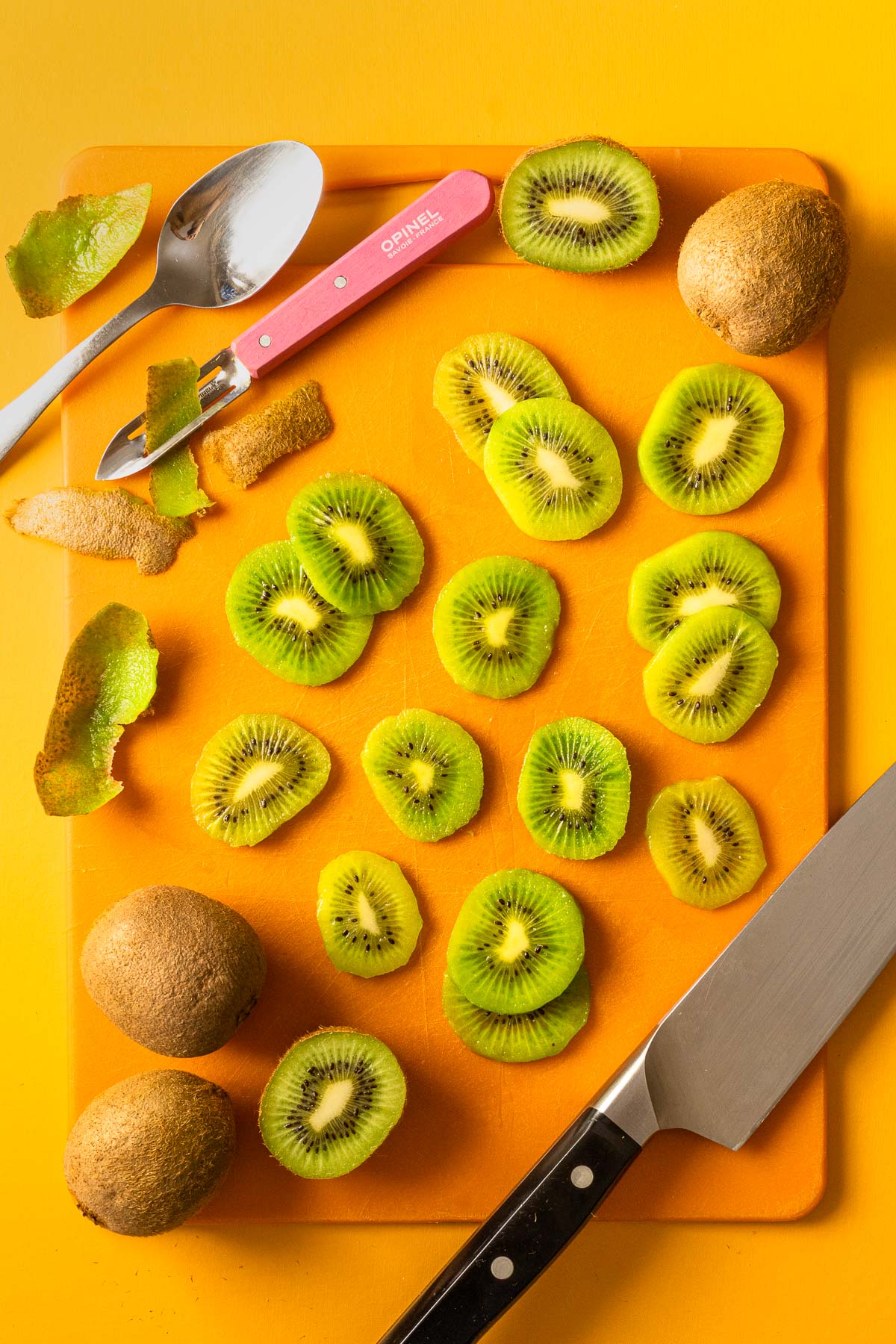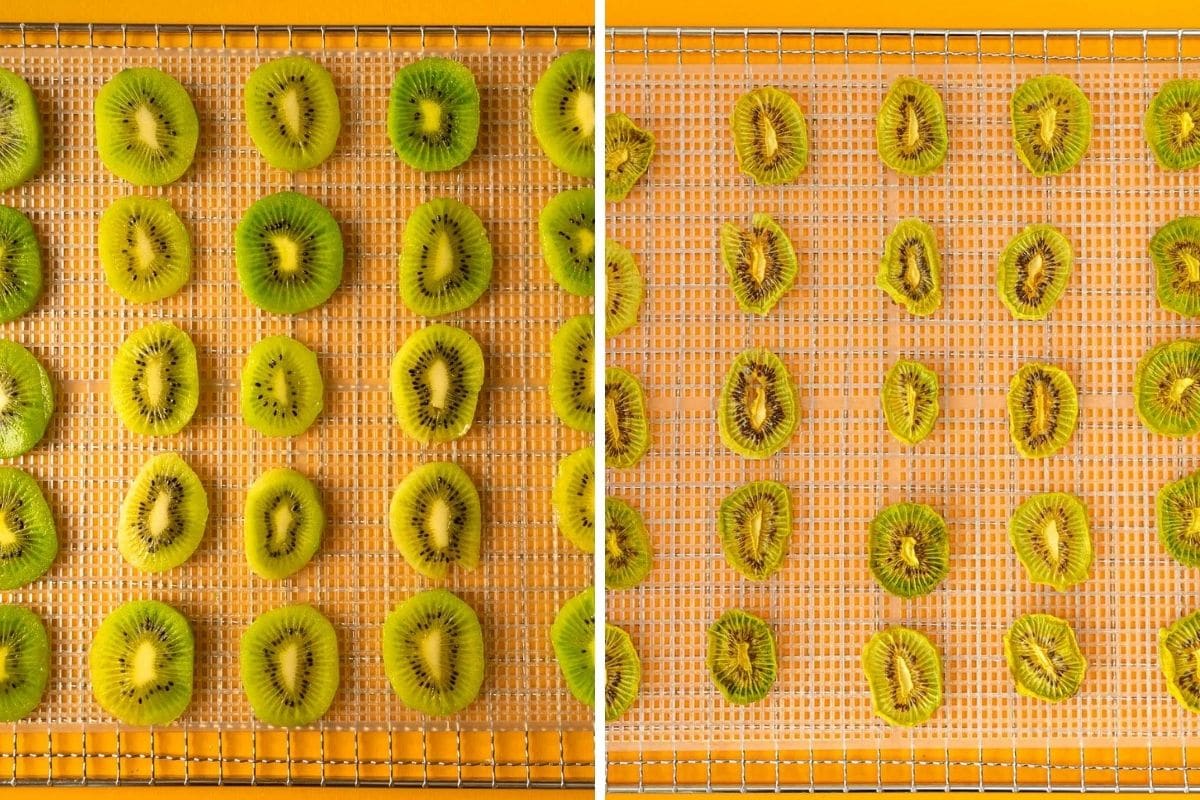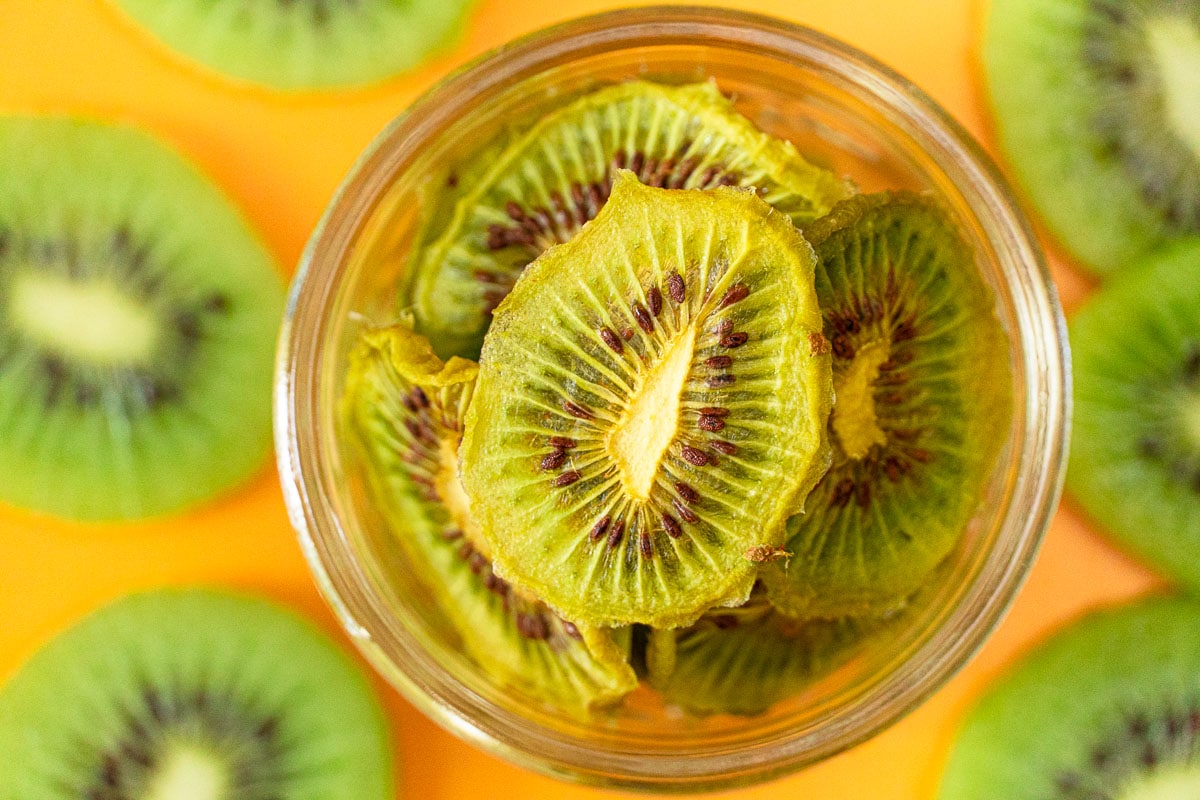How to Dehydrate Kiwi
This post may contain affiliate links.
Dried kiwi has quickly become one of our favorite snacks—it’s like a sweet & sour gummy candy, but natural! In this post, we’re sharing all our tips on dehydrating kiwi for snacking or long-term storage.

With an exotic tropical sweetness and tangy zing, kiwis are one of our favorite fruits to dehydrate for snacking. It’s also a fruit with a fascinating history.
Kiwifruit, commonly shortened to kiwi, is actually a type of wild gooseberry native to China—the earliest recorded mention comes from the 12th century Song Dynasty. In the early 20th century, the cultivation of kiwi spread to New Zealand, where farmers started calling it “kiwifruit” due to its brown, fuzzy exterior—similar to the kiwi bird. Kiwifruit was a hit with servicemen and women stationed on the island during WWII and after the war, the fruit was imported to Europe and then later the United States.
Kiwis are now cultivated in the United States as well, primarily in California. They come into peak season during the months of November, December, and January. This limited window is why it’s a great idea to dehydrate kiwis when they are freshest (and cheapest).
Dried kiwi chips are soft, chewy, sweet, and sour. They’re basically nature’s equivalent to a sweet & sour gummy candy—and they’re equally addictive!
So if you can get your hands on some fresh kiwis, now’s the time to start dehydrating! We cover everything you need to know below.

Prepping kiwis for dehydrating
Before you start prepping your kiwi, make sure your counters, equipment, and hands are clean & sanitized to prevent contamination, which can spoil your batch down the line.
- Remove the skin: Cut each kiwi in half and gently run a spoon between the fruit and the skin to remove, or you can use a peeler and peel the skin (pole to pole works best). The skin is totally edible, so if you want you can leave it on—just make sure you wash them thoroughly.
- Slice the kiwis: Using a sharp knife, slice the kiwis about ¼” thick. Try to keep the pieces to a uniform size to help with even drying.
- Sprinkle with sugar (optional): After arranging the slices on the trays, top each slice with a pinch of sugar. This is totally optional but can help balance out the sour punch of particularly tart kiwis.
Equipment Spotlight: Dehydrators
If you’re in the market for a dehydrator, we recommend buying one with an adjustable temperature. This will allow you to dial in the drying temp to give you the best results for individual ingredients. The dehydrator we recommend (and use) most often is the COSORI dehydrator. You can also check out our best dehydrators post for a comparison of all the dehydrators we’ve used and would recommend.

How to dehydrate kiwis
Dehydrating kiwi is super easy! Once your kiwis are prepped, set up your dehydrator and follow these steps:
- Arrange the kiwi slices on your dehydrator trays. Make sure to leave some space between the pieces to allow air to circulate. If you want, sprinkle with sugar as mentioned above.
- Dehydrate at 135ºF (52ºC) for 6-12 hours until the kiwis are dry and leathery.
- Depending on your machine, you may need to rotate the trays periodically to promote even drying.
- Kiwi can also be dried in the oven. Place a metal cooling rack on top of a baking sheet and arrange the slices. Place it in the oven at the lowest temperature your oven will go. You may want to prop the door open a few inches to help the moisture escape during the first two hours or so (careful if you have children or pets!). Drying time will be up to half as fast as dehydrating due to the higher heat.
How to tell when kiwis are done
Kiwi slices should be leathery in texture when properly dried. To test, remove a slice and let it completely cool. They will have some bend but if you tear one in half and squeeze it, there should be no moisture that seeps out. If they have any signs of remaining moisture, put them back into the dehydrator or oven to dry longer.

How to store dried kiwi
If you’re drying kiwis for snacking and plan on eating them within a week or so, you can store them in a sealed container or zip-top bag on the counter or in your pantry. Just let them cool and place them in a sealed container. We like to use these reusable ReZip bags.
However, if properly dried and stored, dehydrated kiwis can last up to a year! Here are our tips for long term storage:
- Cool: Let the kiwis cool completely before transferring them.
- Condition: Loosely pack the kiwis in a transparent airtight container. Check it daily for a week to check for signs of moisture or condensation, and shake to help prevent the kiwi from sticking together. If signs of moisture appear, stick them back into the dehydrator (as long as there’s no mold—in that case, toss the batch). After a week, if there’s no signs of moisture or mold, you can package them for long-term storage.
- Store in a clean, airtight container. For longer shelf life, vacuum seal.
- Use a moisture absorbing desiccant packet if you anticipate opening the container often, or if you live in an area with high humidity.
- Label the container with the date and any other important details
- Place the container in a cool, dark, and dry place—inside of a pantry cabinet works well.
Vacuum Sealing Tips
We like to store our dehydrated food in mason jars that have been vacuum-sealed using this handheld FoodSaver vacuum sealer along with these jar sealing attachments. This gives us the benefit of vacuum sealing without the waste (and expense) of plastic vacuum sealing bags. Since the jars are clear we make sure we store them in a dark spot in our pantry to keep them out of direct light.

Fresh to dehydrated conversion
Depending on the size of the fruit and how thick you slice them, each kiwi will yield 6-8 slices. For backpacking, a fresh kiwi will dehydrate down to about 10-15% of its original weight. If you add a sprinkle of sugar, they provide ~180cal/oz making these a great hiking snack!

Dried Kiwi
Ingredients
Equipment
Instructions
- Start with clean hands, equipment, and countertops.
- Peel the kiwi by cutting it in half and gently running a spoon between the fruit and the skin to remove. Alternatively, you can use a vegetable peeler and peel pole to pole, or skip peeling entirely (thoughly wash the skin if this is the case).
- Slice the kiwis into ~¼" inch slices and arrange them on a dehydrator rack. If you have them, mesh tray liners will make removal easier once they are dry.
- Optional: Sprinkle a pinch of cane sugar over each slice of kiwi.
- Dehydrate at 135°F / 57°C for 10-18 hours until dry and leathery in texture (see Note 1).
Storage Tips
- Let the dried kiwi cool completely before storing.
- Short term storage: If kiwis will be consumed within a week or to, store in a ziptop bag or sealed container on the counter or in a pantry.
- Long-term storage: Condition by loosely packing the dried kiwi in a transparent, airtight container. Leave it on the counter for a week and check it daily for signs of moisture. If condensation appears, return the kiwi to the dehydrator (unless there are signs of mold—then, throw out the whole batch). Shake occasionally to keep the kiwis from sticking together.After conditioning, store in an airtight container in a cool, dark place for up to a year. Vacuum sealing will help extend the shelf life and quality of the kiwi.
